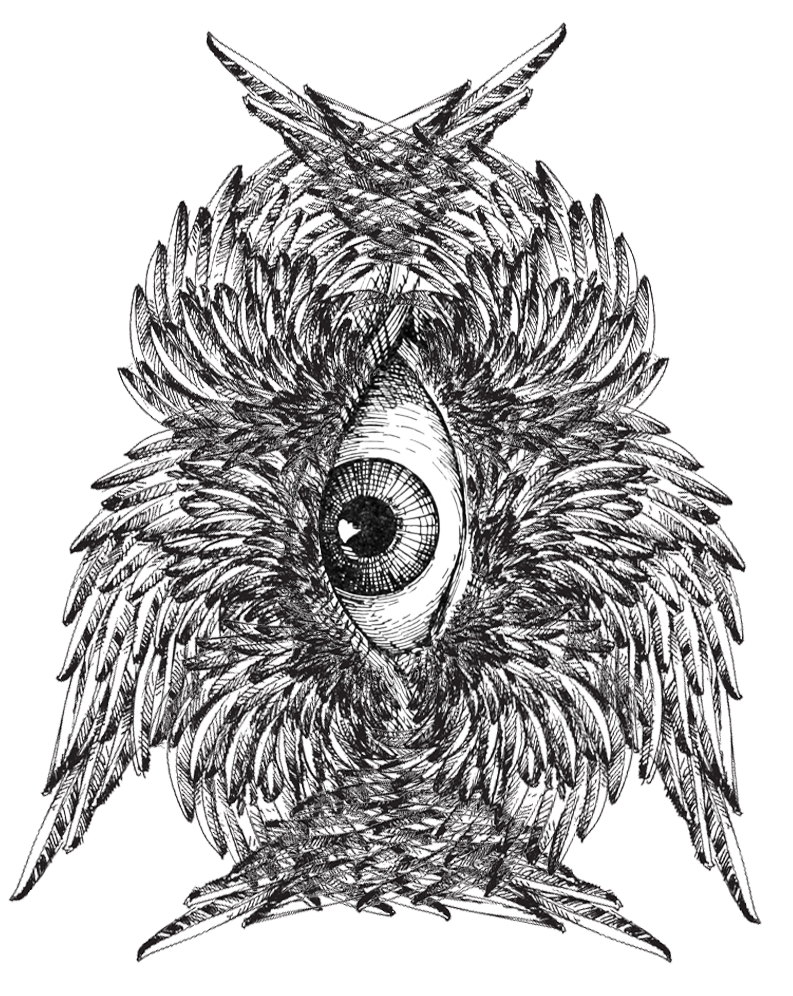Seraphim
A seraph (/ˈsɛrəf/, "the burning one"; plural seraphim /ˈsɛrəfɪm/) is a type of angel originating in Ancient Judaism. The term plays a role in subsequent Judaism, Christianity, and Islam.
Tradition places seraphim in the highest rank in the hierarchy of angels and in the fifth rank of ten in the Jewish angelic hierarchy. A seminal passage in the Book of Isaiah (Isaiah 6:1–8) used the term to describe six-winged beings that fly around the Throne of God crying "holy, holy, holy". This throne scene, with its triple invocation of holiness, profoundly influenced subsequent theology, literature and art. Its influence is frequently seen in works depicting angels, heaven and apotheosis. Seraphim are mentioned as celestial beings in the non-canonical Book of Enoch and the canonical Book of Revelation.
According to Meteorologica Cosmica by Robert Fludd, this choir is ruled over by the Archangel Metatron.
Hebrew-Egyptian Origins
In Hebrew, the word saraph means "burning", and is used seven times throughout the text of the Hebrew Bible as a noun, usually to denote "serpent", twice in the Book of Numbers, once in the Book of Deuteronomy, and four times in the Book of Isaiah (6:2–6, 14:29, 30:6). The reason why the word for "burning" was also used to denote a serpent is not universally agreed upon; it may be due to a certain snake's fiery colors, or perhaps the burning sensation left by its venomous bite. Regardless, its plural form, seraphim, occurs in both Numbers and Isaiah, but only in Isaiah is it used to denote an angelic being; likewise, these angels are referred to only as the plural seraphim – Isaiah later uses the singular saraph to describe a "fiery flying serpent", in line with the other uses of the term throughout the Tanakh.
There is emerging consensus that the motifs used to display seraphs in Hyksos-era Canaan had their original sources in Egyptian uraeus iconography. In Egyptian iconography, the uraeus was used as a symbol of sovereignty, royalty, divinity and divine authority, and later iconography often showed uraei with wings. In the early monarchic period of Israel and Judah, Egyptian motifs were evidently borrowed by the Israelites en masse, as a plethora of personal seals belonging to classes ranging from commonfolk to royalty have been discovered, which incorporate several pieces of ancient Egyptian iconography, including the winged sun, ankh, the hedjet and deshret crowns of Upper and Lower Egypt, scarabs, and the uraeus cobra. These uraei often had four wings, as opposed to the Egyptian standard which only gave them two. These images have been connected with the seraphim angels associated with Isaiah's visions, or perhaps more directly to the aforementioned "fiery flying serpent", but this continues to be debated – and an image of serpentine seraphim clashes with Isaiah's own vision, which clearly envisioned seraphim with heads, legs, and arms.
Isaiah's vision
The vision in Isaiah Chapter 6 of seraphim in an idealized version of Solomon's Temple represents the sole instance in the Hebrew Bible of this word being used to describe celestial beings. "... I saw also the Lord sitting upon a throne, high and lifted up, and his train filled the temple. Above it stood the seraphim: each one had six wings; with twain he covered his face, and with twain he covered his feet, and with twain he did fly." (Isaiah 6:1–3) And one cried to another, "Holy, holy, holy, is YHWH of hosts: the whole earth is full of His glory." (verses 2–3) One seraph carries out an act of ritual purification for the prophet by touching his lips with a live coal from the altar (verses 6–7) "And he laid it upon my mouth, and said, Lo, this hath touched thy lips; and thine iniquity is taken away, and thy sin purged."
The text describes the "seraphim" as winged celestial beings with a fiery passion for doing God's good work. Notwithstanding the wording of the text itself, at least one Hebrew scholar claims that in the Hebrew Bible the seraphim do not have the status of angels, and that it is only in later sources (like De Coelesti Hierarchia or Summa Theologiae) that they are considered to be a division of the divine messengers.
Book of Enoch
Seraphim appear in the 2nd-century BC Book of Enoch, where they are mentioned, in conjunction with cherubim, as the heavenly creatures standing nearest to the throne of God. In non-biblical sources they are sometimes called the Akyəst (Ge'ez: አክይስት "serpents", "dragons"; an alternate term for Hell).
In the Second Book of Enoch, two classes of celestial beings are mentioned alongside the seraphim and cherubim, known as the phoenixes and the chalkydri (Ancient Greek: χαλκύδραι khalkýdrai, compound of χαλκός khalkós "brass, copper" + ὕδρα hýdra "hydra", "water-serpent"—lit. "brazen hydras", "copper serpents"). Both are described as "flying elements of the sun" that reside in either the 4th or 6th heaven, who have twelve wings and burst into song at sunrise.
In the Book of Revelation (4:4–8), the beasts are described as being forever in God's presence and praising him: "And they rest not day and night, saying, 'Holy, holy, holy, Lord God Almighty, which was, and is, and is to come." This account differs slightly from the account of Isaiah, stating in the eighth verse, "And the four beasts had each of them six wings about him; and they were full of eyes within". They appear also in the Gnostic text, On the Origin of the World.
Angels in the choir of Seraphim
- Metatron (ruler of the choir)
- Elemiah
- Achaiah
- Iehahel
- Mahasiah
- Machidiel
- Sitael
- Vehuiah
- Cahethel
- Ieliel
- Archangel Michael (possibly)
